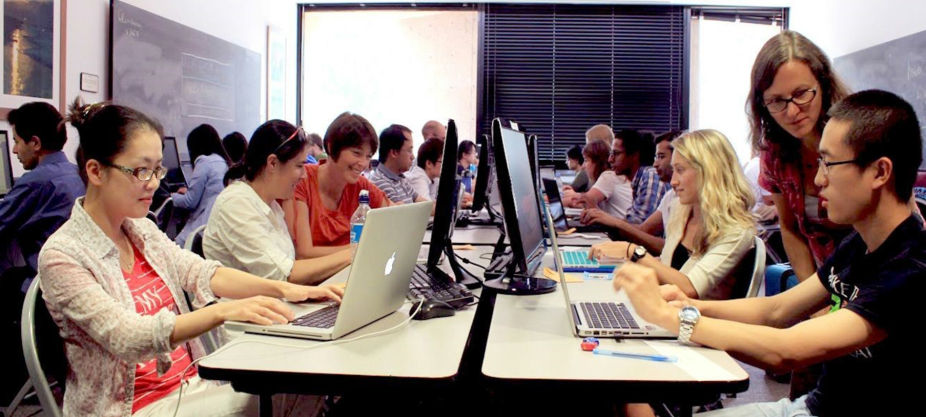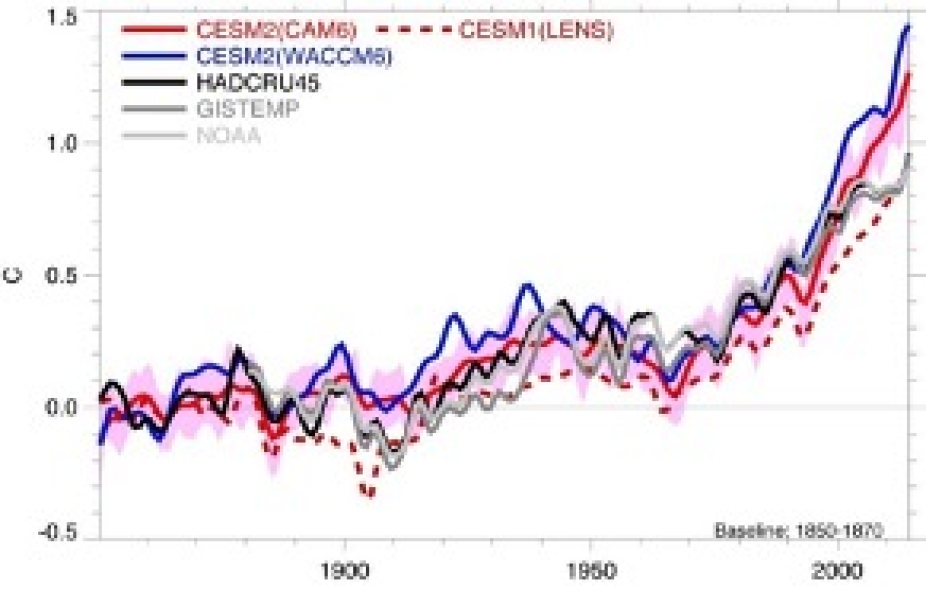Learn more

The NSF NCAR CGD Laboratory: World leader in Earth System science and tools for understanding variability and addressing the risks of Earth System variances in a collaborative environment.
Our Mission
- Developing, using and supporting world-leading community models and simulations for Earth system science, including predictions and projections and other societally important applications
- Co-designing Earth system research across NCAR, universities, and stakeholders throughout the world; leveraging our strengths; and fostering the next generation of Earth system scientists
- Providing trusted, innovative data analysis, tools and methods to enable new scientific discoveries
You can also learn more about our mission & vision.
Opportunities
CGD Scientific Visitor Program. The CGD Laboratory has a robust and long-standing program that brings scientific visitors to NCAR's Mesa Lab each year for collaborative research. Graduate students and postdocs are eligible to participate. Enhanced interaction with the university community allows us to play an important role in the education and training of the next generation of scientists. See our visitor program page for more information.
Community Earth System Model (CESM) Tutorial. Every summer, CGD provides a week-long tutorial for graduate students and early-career scientists. The tutorial consists of lectures on simulating the Earth system and practical sessions on running CESM, modifying its components, and analyzing simulations. The selection process emphasizes advancing research capacity for a broad array of university and other collaborators, with a focus on early career researchers and graduate students. See the CESM tutorial webpage for more information.
CESM Workshop. Every June, CGD hosts a CESM Workshop for the scientific community. The workshop is a combination of plenary presentations, CESM working group sessions, a poster session, and cross working group sessions. Working groups meet to discuss current and future priorities, model development, and simulations. This is also a time to enhance collaborations and communicate CESM science to users and researchers. Presentations are made available to the community via the CESM workshop webpages.
You can also learn more about all of our opportunities.
Community Resources
CESM | Community Earth System Model. CESM is an open-source fully-coupled global Earth system model developed in collaboration with the community. It provides state-of-the-art computer simulations of Earth’s past, present, and future Earth System states. Vital elements of CESM development include modern parameterizations, software engineering, and evaluations against observational datasets. CESM provides the community with a single framework that enables portable and flexible out-of-the-box capabilities for Earth system-related research, including parameterization developments and simpler configurations. See the CESM website for more information.
CESM Component Models and Options. The CESM is a collection of component models: CAM: Community Atmosphere Model; CICE: Los Alamos Sea Ice Model; CISM: Community Ice Sheet Model; CLM: Community Land Model; MOM: Modular Ocean Model. These component models can be used in many different configurations, including stand-alone and simpler configurations, to address a wide range of scientific topics. See the CESM models webpage for more information.
Community Modeling Datasets. Community datasets encompass output and post-processed data from Earth system model experiments. These include ensembles of simulations to explore past, present, and future forced and natural variability of the coupled system and intervention scenarios. They are extensively used by CGD scientists, university collaborators, and other research partners. See the CESM community projects webpage for more information.
Data Guide. Frequently visited by students, the Data Guide is a high-traffic data discovery and knowledge portal featuring community-written expert guidance on the strengths and limitations of the data and methods that are used for observing variability, evaluating models, and predicting physical risk.

Time series of the global-mean surface temperature anomaly relative to the respective 1850-1870 averages during the historical period from observations, CESM2 (CAM6), CESM2 (WACCM6), and CESM1 (LENS) ensemble simulations
CMIP6. Results from the CMIP6 simulations (Diagnosis, Evaluation, and Characterization of Klima [DECK] and Model Intercomparison Projects [MIPs]) with low- and high-top atmospheric components, CESM2(CAM6) and CESM2(WACCM6), respectively, are available on the Earth System Grid. See the ESGF CMIP6 datasets webpage for more information.
Contact
Jon Petch, CGD Director
303-497-1495 | petch@ucar.edu